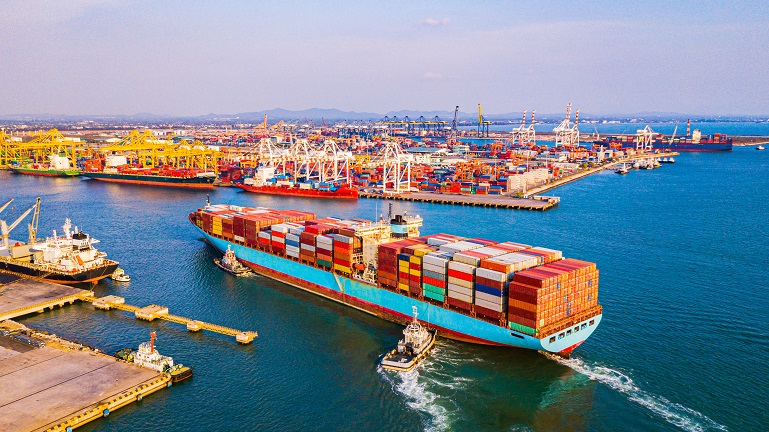Methanol as a Marine Bunker Fuel

An end-use for methanol that is currently in its infancy – but which has significant global potential – is as a bunker fuel for ships.
The advantages of using methanol as a ship fuel are:
- It is a liquid, is relatively easy to handle and can utilize existing storage tanks
- It is widely available, does not contain sulphur and benefits from a near-complete combustion
The disadvantages of using methanol as a ship fuel are:
- It has a low flashpoint, is corrosive, and is miscible in water
- Its lower volumetric energy content, which means that twice the amount of space is required to generate an equivalent amount of energy as conventional bunker fuels
Chemical Market Analytics’ previous view was that Methanol’s lower energy content compared with traditional bunker fuels means it is not suitable for long voyages but has a niche opportunity in short-haul voyages or inland waterways: ferries, barges, tugboats, pilot vessels etc. While this is still partially true, the increasing pressure of the sustainability agenda has prompted a growing number of announcements of new-built ships capable of running on methanol. Therefore, methanol may have a more mainstream future as a marine fuel than previously thought.
There is almost unlimited potential for methanol demand in marine fuel, especially in the growing Emission Control Areas (ECA) zones, where sulfur oxides (SOx) emissions are limited and strictly controlled.
Chemical Market Analytics has a live and rapidly expanding database of current and announced ships that can run on methanol.
In terms of economics, the gap between the fuel oil price and the methanol price has generally not been favorable in the interim period – at least until 2019 and 2022, when high crude oil prices made the economics for methanol more favorable.
Marine Bunker Fuel Regulatory Environment
In 2008, the International Maritime Organisation (IMO) re-set the maximum allowed content of sulfur in bunker fuel from 3.5% by weight to 0.5%. This new limit came into force on 1 January 2020.
ECA zones superseded Sulfur Emission Control Areas or SECA zones. There are ECA zones in North America, the Baltic Sea and the North Sea and the English Channel, Puerto Rico and the US Virgin Islands; in mainland China, the Pearl River delta; the Yangtze River; and in Bohai; and South Korea. Additionally, there are many countries where specific sulphur caps at the anchorage, in-berth, coastal or inland waters apply based on their domestic law.
In the ECA zones, when the new regulation took effect on 1 January 2015, marine fuel’s maximum permitted sulfur content fell from 1.0 percent by weight to 0.1 percent. Few modifications had been made to ships to address this specification change. There are various options for achieving a decrease in allowable sulphur emissions.
Growth prospects
In addition to the general growth opportunities that regulatory changes have opened up, there are some discrete areas of activity relating to using methanol as a marine fuel. We have Methanol producers burning their own cargo as fuel and Large shipowners making a commitment to methanol as a fuel.
Conclusions
Given the environmental challenges facing the shipping industry, particularly lowering exhaust emissions of sulphur, there will undoubtedly be far-reaching changes in the mix of bunker fuels to meet international and local emission requirements. Many shipowners are adopting a range of options.
Chemical Market Analytics’ previous view was that methanol would only play a limited role in the bunker fuel mix in the next ten years based on economic grounds and its lower energy content. The current view is that methanol has an opportunity to become much more of a mainstream marine fuel, partly based on its improved economics in a higher crude oil price environment and partly because shipping companies are much bolder in their commitment to methanol on the following assumptions:
- Supply: demand will ultimately be satisfied by renewable methanol
- Proof of concept: evidence that the new engines can run efficiently and reliably on methanol and can switch to pilot fuel when required; proof that the methanol infrastructure at ports can be delivered quickly and cost-effectively
- Cost: the capital cost of building or retro-fitting vessels to run on methanol versus other fuels and the variable cost difference of the range of fuels available relative to the varying amounts of space required to store these fuels
The global marine sector consumes over 200 million metric tons of bunker fuel every year. It would only take a small percentage of this total to be converted to methanol for this end-use to become a significant application for the methanol industry.
Given this changing landscape for methanol as a marine bunker fuel, Chemical Market Analytics has revised upwards its methanol demand outlook for this sector. Join the Chemical Market Analytics World Methanol Conference on the 25 – 26 September 2023 to learn more about the future of methanol as a marine fuel.
This year’s conference will be held in person in Vienna, Austria, and will include speeches from some of the industry’s leading companies and experts from Chemical Market Analytics.
Authors

Mike Nash
Vice President

Xiaomeng Ma
Director

Javier Ortiz
Director

Shreya Kansara
Senior Research Analyst
We can help you prepare for and navigate methanol market disruptions –
Learn how by watching the video below or contacting us today.
Talk to an expert

